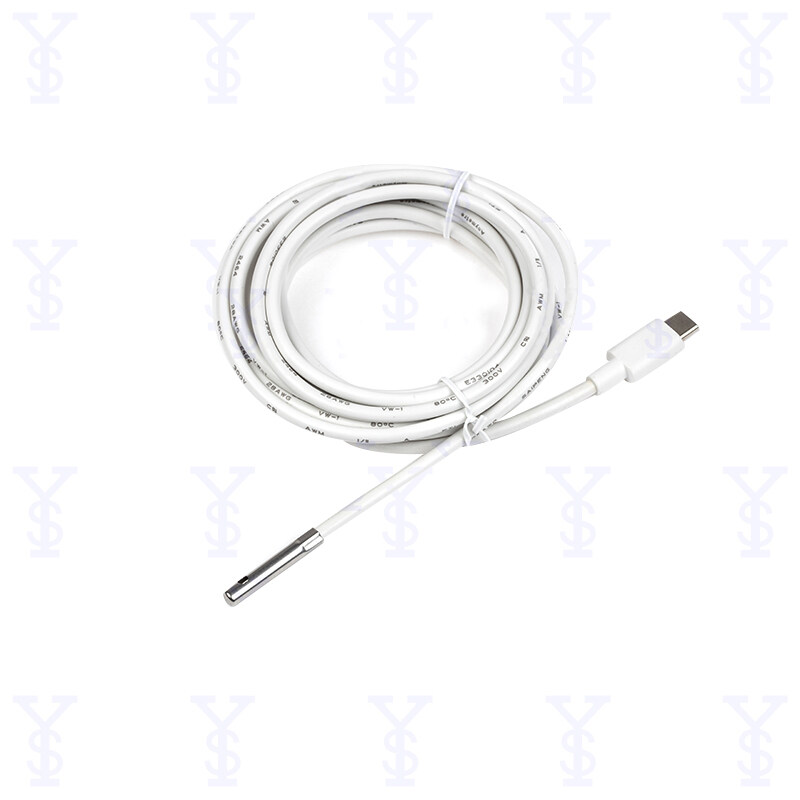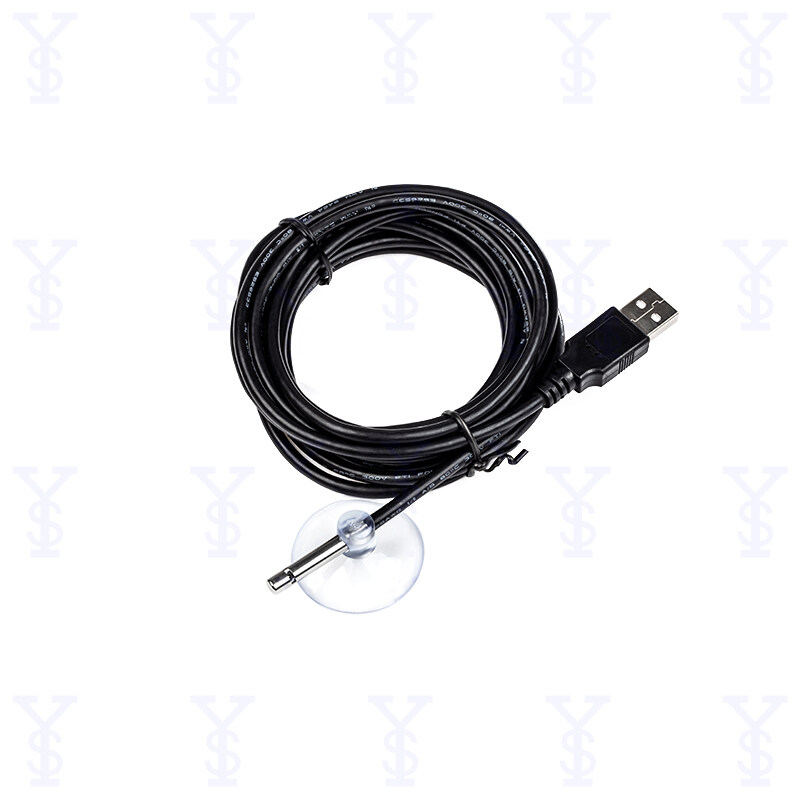Gwall fformat e-bost
emailCannotEmpty
emailDoesExist
pwdLetterLimtTip
inconsistentPwd
pwdLetterLimtTip
inconsistentPwd


Exploring the Advancements of Combined Temperature and Humidity Sensors
In the vast landscape of environmental monitoring, the integration of temperature and humidity sensing capabilities into a single device marks a significant leap forward in precision and efficiency. Combined temperature and humidity sensors offer a holistic approach to understanding environmental conditions, providing valuable insights for a wide range of applications. In this introductory section, we set the stage for a deep dive into the capabilities and advancements of these innovative sensors.
Understanding the Fundamentals: What Are Combined Temperature and Humidity Sensors?
At the core of combined temperature and humidity sensors lies a sophisticated blend of sensing technologies, each designed to capture and quantify specific environmental parameters. Capacitive sensors, which measure changes in electrical capacitance, are commonly used for humidity detection, while resistive or thermal-based sensors are employed for temperature measurement. By integrating these sensing elements into a single device, combined sensors offer a streamlined solution for environmental monitoring, delivering simultaneous temperature and humidity readings with precision and accuracy.
The Advantages of Combined Temperature and Humidity Sensors
The integration of temperature and humidity sensing capabilities into a single device offers several distinct advantages over traditional standalone sensors:
1. Space and Cost Savings: With combined sensors, the need for separate temperature and humidity sensors is eliminated, resulting in space-saving benefits, particularly in applications where real estate is limited. Additionally, the consolidation of sensing elements into a single device reduces overall costs associated with purchasing and maintaining multiple sensors.
2. Synchronized Data Acquisition: Unlike standalone sensors, which may provide disparate readings that require manual synchronization, combined sensors deliver synchronized temperature and humidity measurements in real-time. This synchronized data acquisition enables more comprehensive environmental monitoring and facilitates more informed decision-making.
3. Improved Accuracy and Stability: Integrated sensor designs minimize potential discrepancies between temperature and humidity readings, ensuring greater accuracy and stability over time. By eliminating the need for separate calibration and alignment procedures, combined sensors deliver consistent and reliable performance in diverse environmental conditions.
4. Enhanced Compatibility and Integration: Combined sensors are designed to seamlessly integrate with various monitoring and control systems, offering greater flexibility and compatibility across different platforms and applications. Whether deployed in industrial automation, agricultural management, or smart home environments, combined sensors provide a versatile solution for diverse monitoring needs.
Applications Across Diverse Industries
The versatility of combined temperature and humidity sensors makes them invaluable across a wide range of industries and applications:
1. HVAC Systems: In heating, ventilation, and air conditioning (HVAC) systems, combined sensors play a crucial role in optimizing indoor air quality and comfort. By monitoring temperature and humidity levels in real-time, these sensors enable HVAC systems to adjust airflow and temperature settings dynamically, ensuring optimal environmental conditions for occupants.
2. Food Storage and Transportation: In food storage facilities and during transportation, maintaining the ideal temperature and humidity conditions is essential for preserving the freshness and quality of perishable goods. Combined sensors help monitor environmental conditions in refrigerated storage units, cold rooms, and transportation vehicles, enabling proactive measures to prevent spoilage and ensure food safety.
3. Greenhouse and Agriculture: In greenhouse environments and agricultural settings, combined sensors facilitate precise control of temperature and humidity levels, creating optimal conditions for plant growth and crop yield. By monitoring environmental parameters in real-time, these sensors help farmers and growers optimize irrigation schedules, ventilation systems, and climate control strategies, resulting in higher productivity and resource efficiency.
4. Data Centers: In data centers and server rooms, where temperature and humidity regulation is critical for equipment performance and longevity, combined sensors play a vital role in maintaining optimal environmental conditions. By continuously monitoring temperature and humidity levels, these sensors help prevent overheating and moisture buildup, reducing the risk of equipment failure and downtime.
Recent Technological Advances and Innovations
Recent advancements in combined temperature and humidity sensor technology have further expanded their capabilities and performance:
1. Wireless Connectivity: Integrated wireless communication capabilities enable combined sensors to transmit data remotely, facilitating real-time monitoring and control from anywhere with an internet connection. Wireless sensor networks allow for seamless integration with existing infrastructure and enable scalability for large-scale deployments.
2. Energy Efficiency: Advanced sensor designs incorporate energy-efficient features such as low-power consumption and sleep modes, prolonging battery life and reducing overall energy consumption. By optimizing power management, these sensors offer extended operational lifetimes and reduced maintenance requirements.
3. Data Analytics and Cloud Integration: Combined sensors can integrate with cloud-based platforms and data analytics tools, enabling comprehensive data analysis, trend monitoring, and predictive maintenance. Cloud-based solutions offer scalability, flexibility, and accessibility, allowing users to access sensor data from any internet-enabled device and make informed decisions based on actionable insights.
4. Miniaturization and Integration: Ongoing advancements in sensor miniaturization have led to the development of compact, integrated sensor modules suitable for portable and wearable applications. Miniaturized sensors offer improved mobility, flexibility, and versatility, expanding their use in consumer electronics, personal health devices, and IoT applications.
Future Trends and Outlook
Looking ahead, the future of combined temperature and humidity sensors holds tremendous promise for innovation and advancement:
1. Artificial Intelligence and Machine Learning: Integration with artificial intelligence (AI) and machine learning (ML) algorithms will enable combined sensors to learn from historical data, optimize environmental conditions, and predict future trends with greater accuracy. AI-driven analytics will enable proactive decision-making and predictive maintenance, leading to improved efficiency, reliability, and performance.
2. Smart Home and IoT Integration: With the proliferation of smart home devices and IoT ecosystems, combined sensors will play a central role in creating interconnected environments that adapt to occupants' preferences and behaviors. Integration with voice assistants, smart thermostats, and home automation systems will enable seamless control and customization of indoor environments, enhancing comfort, convenience, and energy efficiency.
3. Environmental Monitoring and Sustainability: In environmental monitoring and sustainability initiatives, combined sensors will contribute to more efficient resource management, conservation efforts, and climate change mitigation strategies. By monitoring temperature and humidity levels in outdoor environments, combined sensors can help identify trends, patterns, and anomalies that impact ecosystems, wildlife habitats, and natural resources.
4. Healthcare and Wellbeing: In healthcare settings and personal wellness applications, combined sensors will provide valuable insights into indoor air quality, helping to mitigate health risks and enhance overall wellbeing. Integration with wearable devices, smart home healthcare systems, and telemedicine platforms will enable remote monitoring of environmental conditions and personalized interventions to improve health outcomes and quality of life.
Conclusion: Harnessing the Power of Combined Temperature and Humidity Sensors
Combined temperature and humidity sensors represent a paradigm shift in environmental monitoring, offering unparalleled accuracy, efficiency, and versatility across diverse industries and applications. By seamlessly integrating temperature and humidity sensing capabilities into a single device, these sensors provide valuable insights into environmental conditions, enabling proactive measures to optimize comfort, safety, and productivity. As advancements in sensor technology continue to accelerate, the future holds limitless opportunities for innovation and exploration in environmental monitoring, smart systems, and beyond. Embracing the power of combined sensors is not just a step forward—it's a leap into a future where precision, connectivity, and sustainability converge to shape a world of smarter, more responsive environments.

